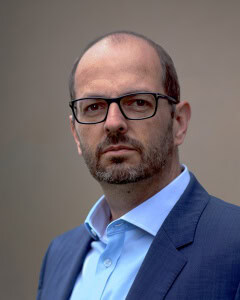
The numbers game: getting quantitative information to patients
pharmafile | November 17, 2014 | Feature | Manufacturing and Production, Medical Communications, Research and Development, Sales and Marketing | Kadcyla, Les Rose, clinical, myeloma, numbers, numerics
The great physicist Lord Kelvin said: “If you can measure something, and express it in numbers, then you know something about it,” so let’s think about how healthcare can be boiled down to numbers people can understand.
Recently there was the news story about the rejection by NICE of the breast cancer drug Kadcyla. As usual, the lay media concentrated on the impact on individual patients rather than the big numbers. Human stories always make better news apparently.
A breast cancer patient who had done extremely well on Kadcyla said that you can’t put a value on a life. Of course, that is NICE’s raison d’être, valuing both quality and quantity of life. Critics argue about the benchmarks used, but I haven’t seen anyone skilled in the art of denying the very principle of having a benchmark at all. Without it, health economics would not exist.
Indeed, health economics might be seen as a thankless pursuit. It is beset with hard choices, forever circumscribed by the finite resources of the healthcare system. For every decision in favour of a treatment, there will be a cost in the form of withholding some other treatment.
Such decisions would be impossible without some way of quantifying the costs and benefits in each case. But these principles are very poorly understood by consumers. During a lecture I once gave to a science club, I found that most of the audience (of people who were quite science-literate) saw NICE as a barrier to access to medicines, not as an assessor of value.
Indeed, NICE has told me that the most difficult aspects of their assessments to convey to the general public are around cost effectiveness and explaining how they compare the effectiveness of treatments. This is despite a long-running patient and public engagement programme.
Living at the limit
Another distortion of which the lay media are perennially guilty is an obsession with extremes. There is a website which lists all the substances which the Daily Mail says cause cancer, and all the ones which the same newspaper says prevent cancer. Some of them are on both lists.
Even assuming there is any scientific basis for the claims, the truth of course is somewhere in between. The same thought process applies to continuous data.
The fortunate breast cancer patient quoted above was clearly at one end of the bell-shaped curve of survival. The TV news producer didn’t consider anyone from the other end. Apart from not making a good story, quite naturally such people would not be available for interview.
We constantly read about people who were apparently given, say, six months to live but have amazingly conquered their disease with some unconventional treatment or other. Well here’s my story.
Eight years ago I was diagnosed with myeloma. My haematologist said that the median survival time was three to five years. Now I don’t know if he would have quoted the median if he had not guessed that I would understand it.
To somebody else he might have said ‘average’. Nevertheless, I don’t believe that most doctors hand out prognoses like ‘six months to live’. If they do they are misleading their patients. The fact that I am writing this means that I am also at the tail end of the distribution curve, albeit a non-normal one if we have to quote the median.
I really don’t believe that people in general are too stupid to understand that data they might be given about the development of their disease are estimates and not predictions. I’m sure they are able to comprehend that reality may be at any one of a number of points on a curve of probability.
But I’m not sure they are routinely presented with information in this manner. Medicine is now underpinned by the principle of informed consent, but do doctors have the time to have a proper dialogue with the patient on risks and benefits? Not in a standard 10-minute consultation.
Numbers on tap
Perhaps doctors assume that in this connected age patients have informed themselves? My guess, though, is that people don’t actively seek out health information unless they are under the threat of illness. The rest of the time they are vulnerable to all the misinformation they get from the lay media.
The world is not a monochrome patchwork of blacks and whites; things are not so easily categorised as ‘good’ or ‘bad’. Yet people to whom we are expected to defer very often don’t understand data distribution. Earlier this year our education minister thought that standards in schools could be improved by getting more of them to be above average.
So it’s hardly surprising that people who are at the receiving end of healthcare are not able to make properly informed choices, if they get much of their information from simplistic journalism and innumerate politicians. But it’s actually very easy to find digestible information about health and treatments. The difficulty is differentiating it from the flood of misinformation on the internet.
The NHS is doing its bit in certain places, and I am very impressed with NHS Choices. The odd thing though is that despite the clear popularity of NHS Choices, many readers don’t appear to absorb the information.
Right now we have a long-running debate about statins. The NHS Choices section on these drugs is clear, balanced and informative, but the comments were dominated by people who reported their terrible experiences with side effects.
Sympathetic as I am, none of these people had grasped the principle that treatments are assessed on a balance between risk and benefit, and that anecdotal data are of very little value.
Risky business
Underlying much of the problem is a poor understanding of risk. A great deal of research has been carried out on how people modify their approach to risk in the light of experience. Such effects are not rationally based; for example a loss induces people to take bigger risks in order to recoup the loss.
This is a very complex field, but it appears that more education on probability would prepare the ground for a better understanding of health information. Such education needs to include not just what risk is, but why we react to it in the way we do.
For these reasons it is going to be difficult to present risk data about treatments, but not impossible.
Yet the problem is often made worse unnecessarily. One of my bugbears is the use of relative risks. It’s always dramatic to say that the risk of heart attacks was increased by 50%. But the baseline risk might have been 1%, so we are only looking at an increase of 0.5 per cent.
Not many people would worry much about that. Exactly the same argument applies to benefits of course.
Knowledge, but too late?
If interest in quantitative information about treatments is largely triggered when people become ill, that is perhaps not the best time for them to absorb the information and make a proper decision. They are more vulnerable to bias – hence the problem of gravely ill people travelling the world in search of implausible remedies.
Ideally, people need to be armed with the relevant understanding before they are ill. This surely is the role of the healthcare system, whatever it is in your country.
There is good evidence from rigorous studies that closer patient engagement by healthcare workers not only improves treatment compliance and health outcomes, but reduces total healthcare costs. This is just one aspect of a vast body of research into patient education and self-management, but from what I have seen the focus is on educating people when they already have a diagnosis.
My hypothesis is that educating people in healthcare evidence before they become patients, especially in the numeric presentation of data, should achieve similar benefits.
Les Rose is a freelance clinical science consultant and medical writer
Related Content

FDA grants orphan drug designation to relapsed or refractory multiple myeloma candidate
The US Food and Drug Administration (FDA) has granted orphan drug designation to SAR446523, Sanofi’s …

Johnson & Johnson announces successful results from trial for myeloma treatment
Global healthcare company, Johnson & Johnson, announced that analysis of its Darzalex (daratumumab) therapy showed …

Antion launch new technology for cancer and tumour treatments
Antion Biosciences has launched a new T-cell technology platform to help with the development of …






